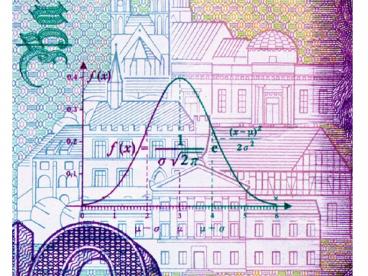Rejecting Data - PowerPoint PPT Presentation
Rejecting Data
For the calculation of molarity where we have many data points other methods should be used. ... Let's assume that red area is Pd. 2d ... – PowerPoint PPT presentation
Title: Rejecting Data
1
(No Transcript)
2
Rejecting Data
For small number of samples one uses the Q-test
to reject data. For the calculation of molarity
where we have many data points other methods
should be used. Here I present one such
method. Given a random distribution of data, the
probability of a single measurement of being /-d
of the mean is Pd, where Pd is the red area under
the Gaussian curve shown on the next transparancy.
3
Lets assume that red area is Pd.
2d
4
If we make N measurements, then the probability
of them all being /-d of the mean is (Pd)N.
What does it mean if (Pd)N .95?
It means that we are 95 sure that all the data
should fall within /-d of the mean. If a data
point is outside the range /-d we can throw is
away with 95 confidence that it does not belong
to the statistical distribution.
How do we calculate d? Assume N90.
If (Pd)N .95 then Pd(.95)1/N.99943.
5
If F0.99943/2.49971, what is y?
We find that d3.43s where s is standard
deviation.
6
Binning assignment is due with the KHP lab
sheets.
PowerShow.com is a leading presentation sharing website. It has millions of presentations already uploaded and available with 1,000s more being uploaded by its users every day. Whatever your area of interest, here you’ll be able to find and view presentations you’ll love and possibly download. And, best of all, it is completely free and easy to use.
You might even have a presentation you’d like to share with others. If so, just upload it to PowerShow.com. We’ll convert it to an HTML5 slideshow that includes all the media types you’ve already added: audio, video, music, pictures, animations and transition effects. Then you can share it with your target audience as well as PowerShow.com’s millions of monthly visitors. And, again, it’s all free.
About the Developers
PowerShow.com is brought to you by CrystalGraphics, the award-winning developer and market-leading publisher of rich-media enhancement products for presentations. Our product offerings include millions of PowerPoint templates, diagrams, animated 3D characters and more.































